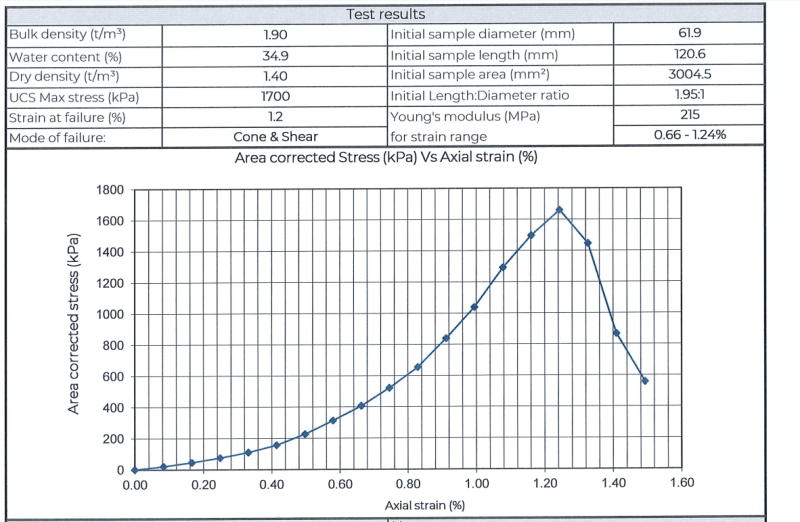Hi all,
Hopefully a basic question. I am looking through some UCS data (image attached) and am trying to understand where the Young's Modulus has been derived from. The strain at failure is given (and a strain range) but none of these produce the Young's Modulus shown when plugged into E = Δσ / Δεa. I have read that E is calculated at a stress-strain level of about 50% of the maximum load, but this doesn't seem to yield the "correct" Young's Modulus provided either. The stress/strain are already area corrected so felt that I had ruled out this as a potential issue too.
Am I missing something, or is the data I need to calculate E myself hidden within the lab processing?
Cheers.

Hopefully a basic question. I am looking through some UCS data (image attached) and am trying to understand where the Young's Modulus has been derived from. The strain at failure is given (and a strain range) but none of these produce the Young's Modulus shown when plugged into E = Δσ / Δεa. I have read that E is calculated at a stress-strain level of about 50% of the maximum load, but this doesn't seem to yield the "correct" Young's Modulus provided either. The stress/strain are already area corrected so felt that I had ruled out this as a potential issue too.
Am I missing something, or is the data I need to calculate E myself hidden within the lab processing?
Cheers.



![[cheers] [cheers] [cheers]](/data/assets/smilies/cheers.gif)